Michael Armitage – Royal Academy, London
A review of the Royal Academy’s exhibition of works by Michael Armitage. Accompanied by a selection of contemporary East African artists, this exhibition is insightful and illuminating.
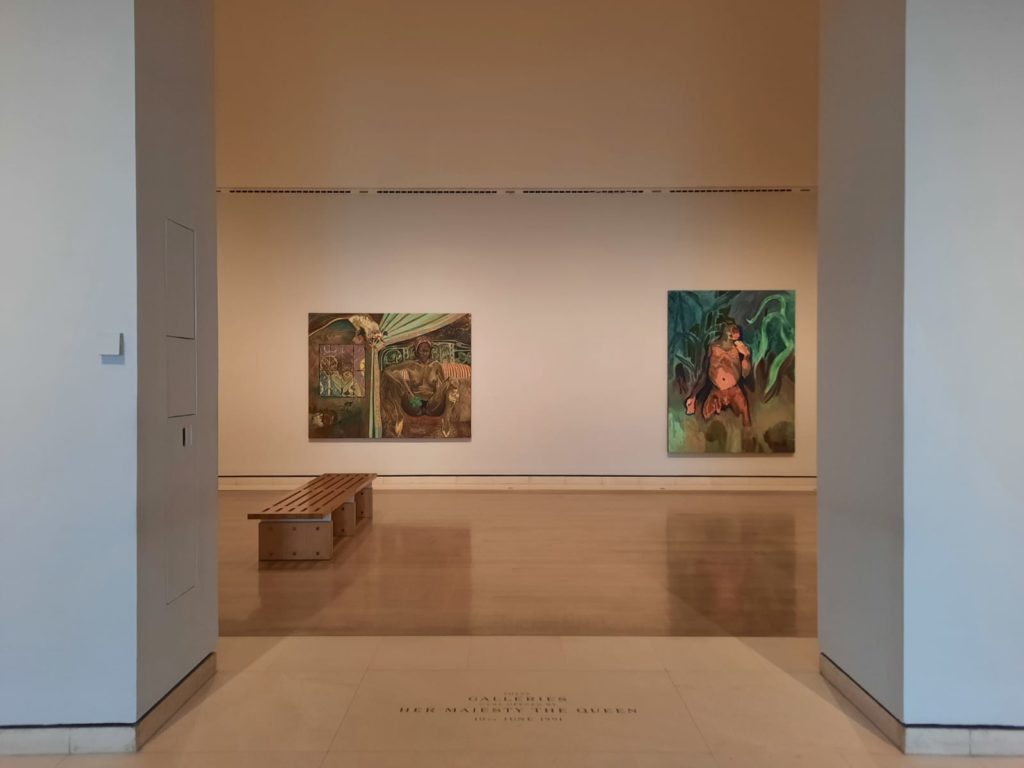
Michael Armitage Brings Contemporary East African Art To The RA
My first visit back at the Royal Academy post-recent lockdown was to see an exhibition of works by Michael Armitage. It is taking place in the same upstairs gallery where I saw Léon Spilliaert last year, and the set-up is the same. You wait at a designated meeting point, go upstairs as a group, and have 55 minutes before you’re all cleared out in preparation for the next group. It works pretty well, and even though I was running a bit late on this occasion we still had ample time.
Michael Armitage is a Kenyan painter working between Nairobi and London. He is also a graduate of the Royal Academy Schools. His large-format paintings are perfectly suited to this space: it’s easy to stay socially distanced while still taking in the detail. The middle section of the exhibition was, for me, an unexpected delight. Armitage has selected works by half a dozen contemporary East African artists. The painters (Meek Gichugu, Jak Katarikawe, Theresa Musoke, Asaph Ng’ethe Macua, Elimo Njau and Sane Wadu) are displayed within the exhibition space with a couple of short video introductions, and works by sculptors and ceramicists (Wangechi Mutu, Magdalene Odundo and Chelenge van Rampelberg) are displayed just outside. These artists are important in the development of contemporary East African art, and have influenced Armitage’s practice.
Seeing the influences and the influenced side by side was a rare treat. We are so little exposed to some of these artists that I enjoyed learning more about them – their backgrounds, subjects and styles. It also fed into some of the currents running through this exhibition, about East African art, the Western gaze. More on this shortly.
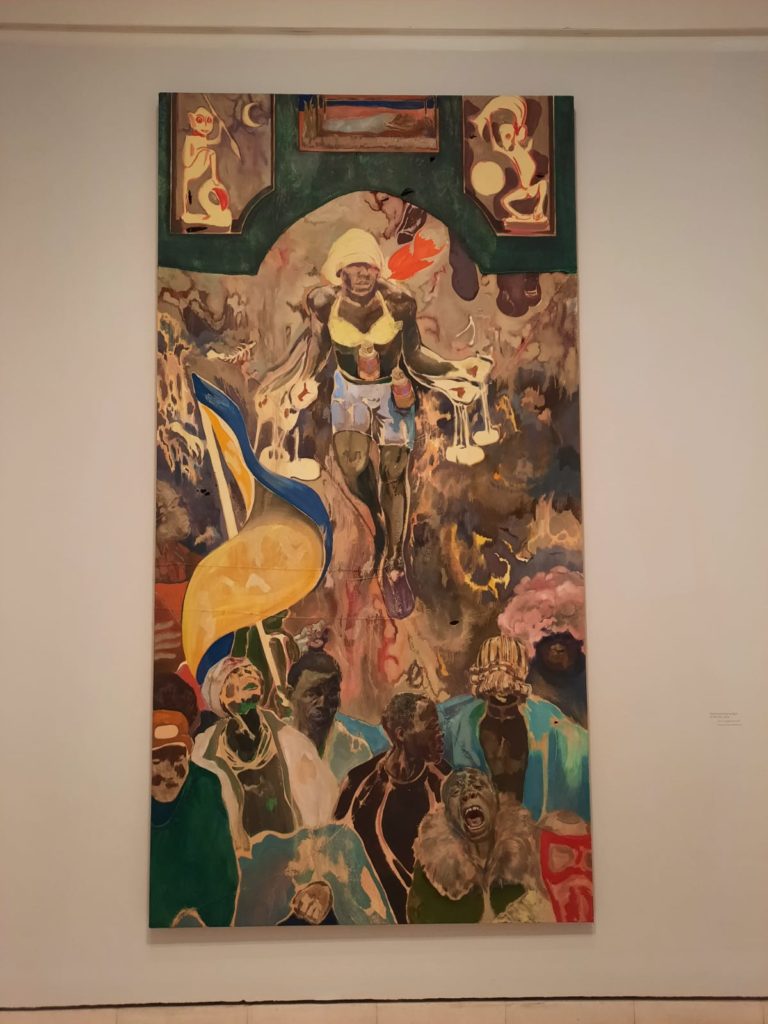

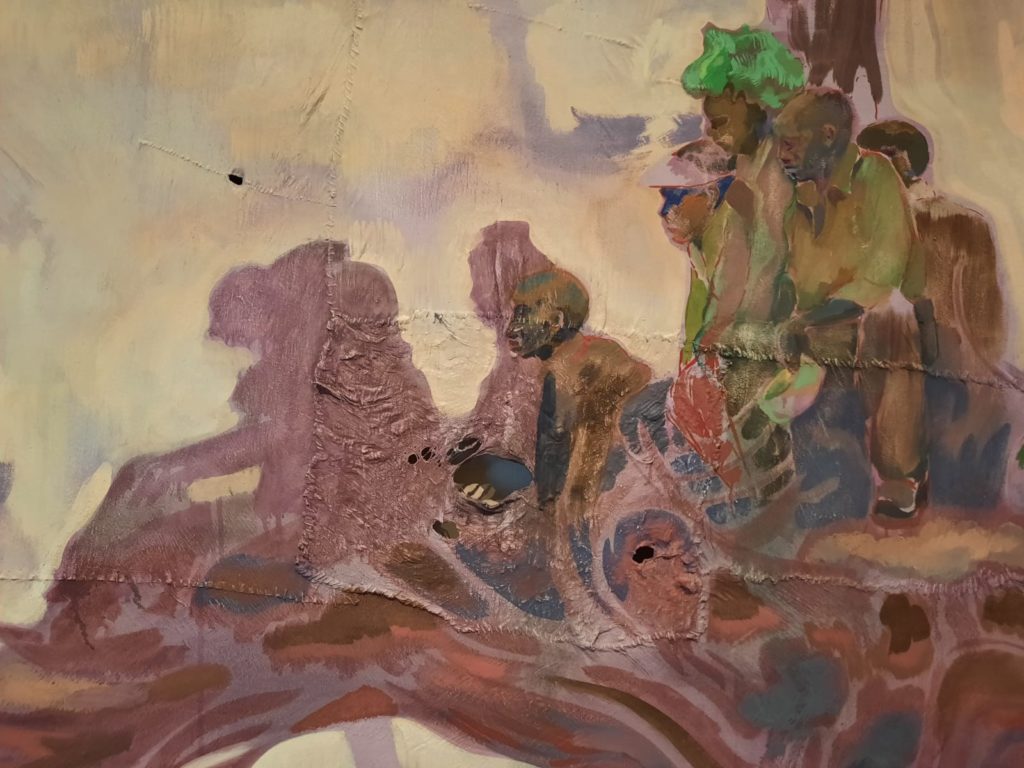
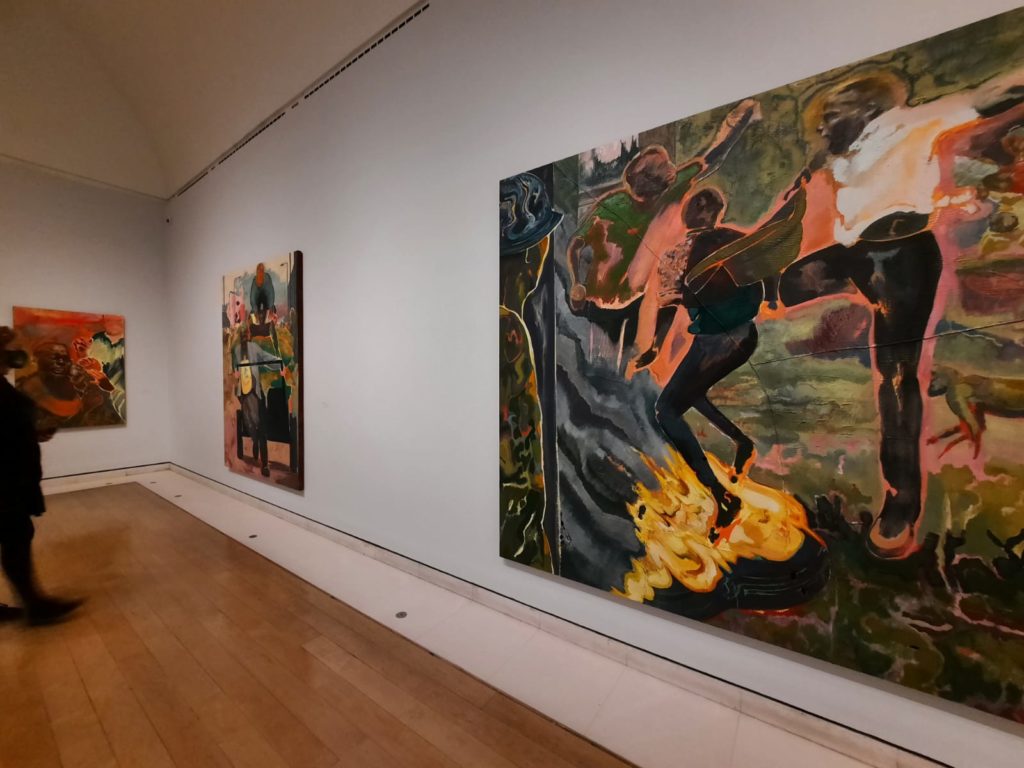

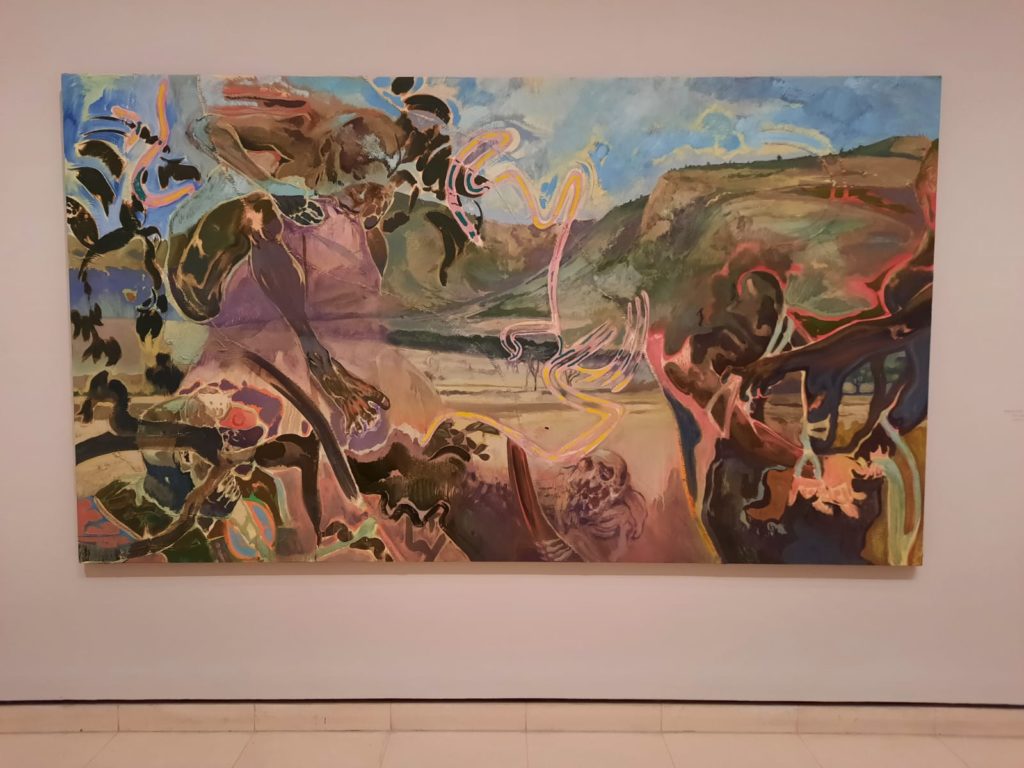
Paintings That Pack A Punch
Michael Armitage’s paintings lure you in. The colours are bright and bold. You read in a text panel that Armitage paints on lubugo, a traditional Ugandan bark cloth, and move in for a closer look at the texture. Then you start to notice the disquieting and subversive images. A man runs, clutching what turn out to be chickens. There are flames, contorted faces and even a crocodile. References to Goya, Gauguin and other artists combine with Armitage’s own visual motifs, like the toads which reoccur across canvases.
Of the paintings currently on display at the Royal Academy, many explore politics and political violence. Others subvert the ways in which Western artists have exoticised and objectified Africa and Africans. This is evident even in the section displaying the work of other artists. The introductory panel discusses how the focus on the ‘naive’ self-taught African artist has tended to eclipse the aims and achievements of both self-taught and formally-taught contemporary artists. It is also evident that a lot of formal engagement between some of the earlier artists displayed here and the artistic establishment was via white [female] teachers and gallerists. This exhibition definitely has a lot to say about race, art, and colonial and post-colonial power dynamics. It will take me a while to unpack it all.


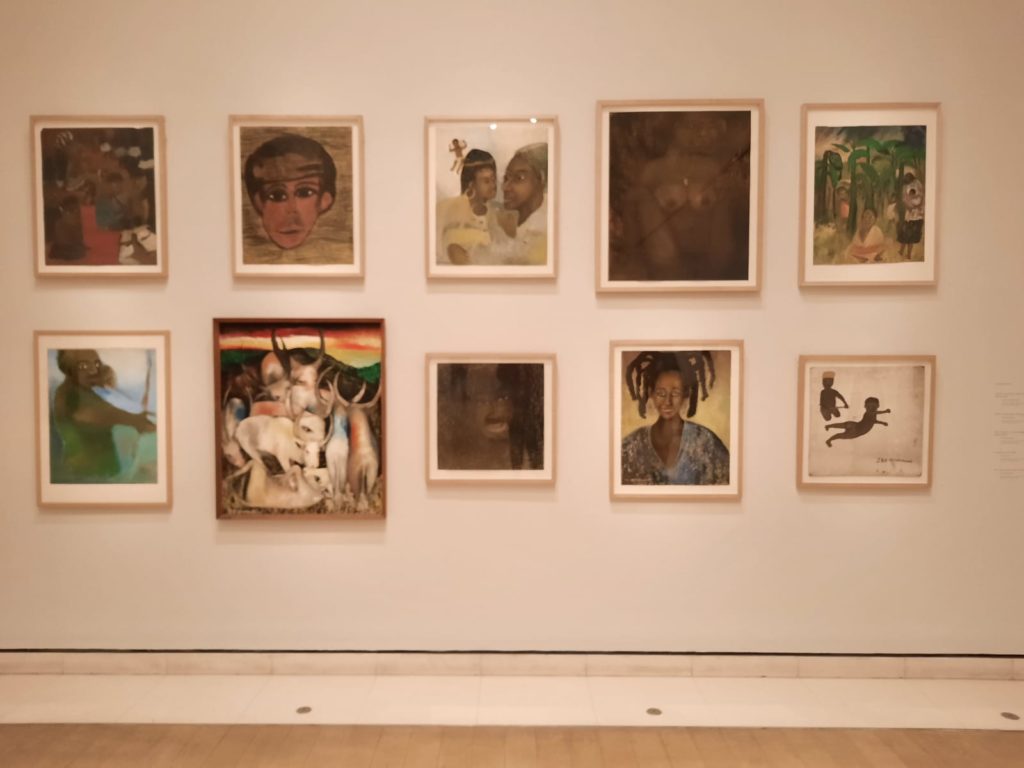

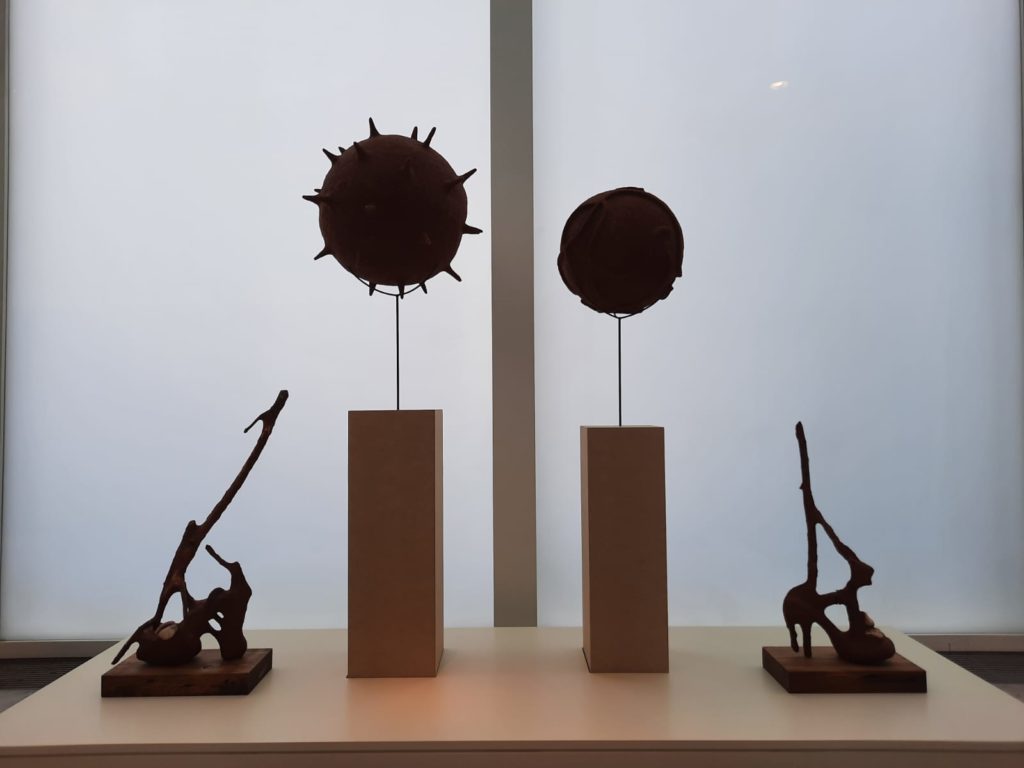
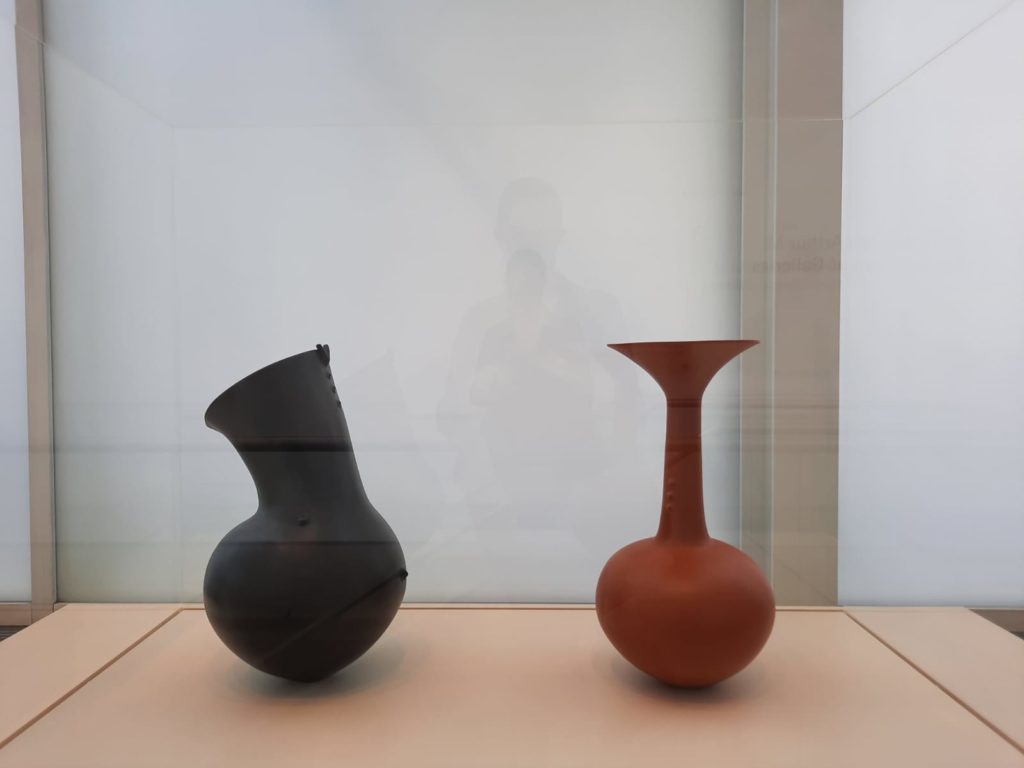
Final Thoughts
I thought this was a really strong exhibition featuring an artist whose star is rising. Michael Armitage has immense skill as a painter. His paintings are complex, accomplished and fascinating to look at. In one image (see cropped version below) he can reference Ancient Greek myth (with the title, Antigone), post-Impressionism (with the Gauguin-esque totemic figures in the background), and comment on completely modern social expectations and mores. When you compare this to yet another Hockney blockbuster downstairs, I find this exhibition infinitely more appealing.
Black/Black British artists are still underrepresented in galleries, collections and exhibitions. So it is nice to see the RA celebrating a graduate from its own programme. I look forward to seeing more work from Michael Armitage. If this exhibition is anything to go by, it will continue to challenge and delight me in future as much as it has done in this show. I would also love to one day have the opportunity to visit the Nairobi Contemporary Art Institute, which Armitage has founded as a non-profit visual arts space and which has a companion exhibition on now.
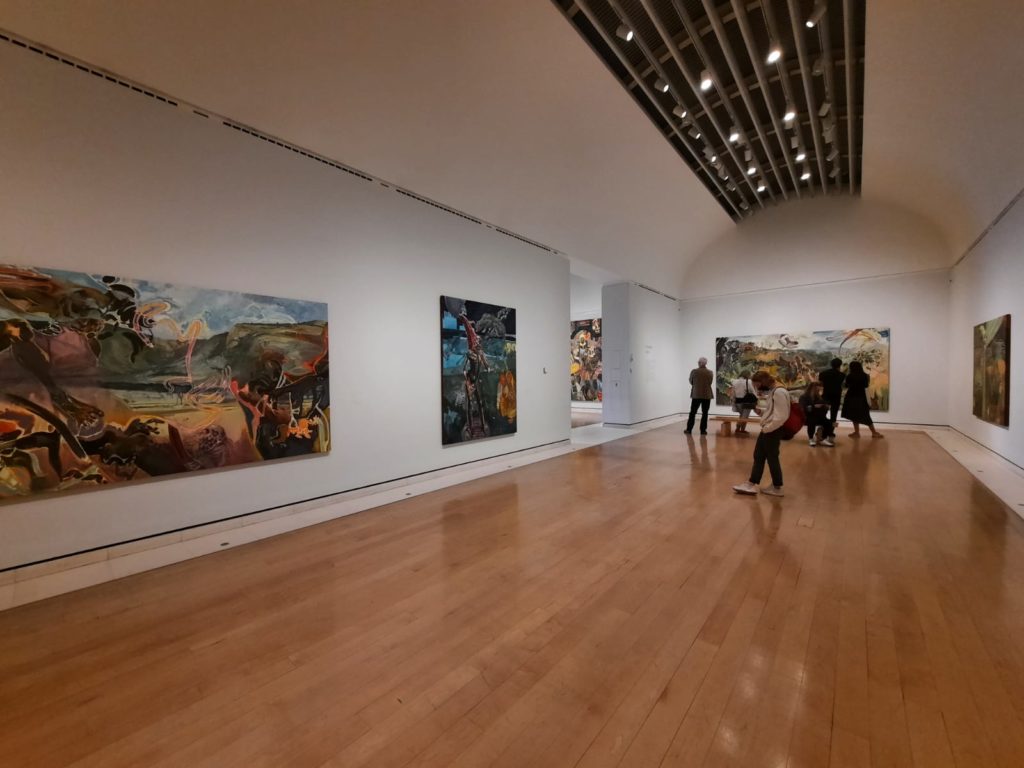
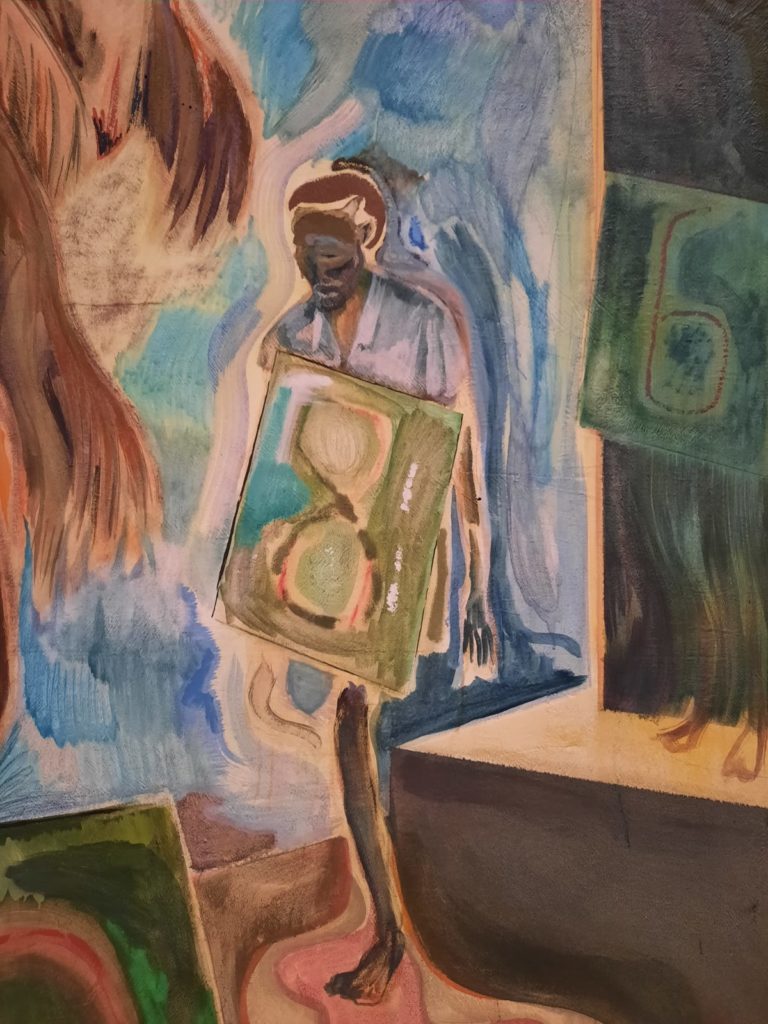



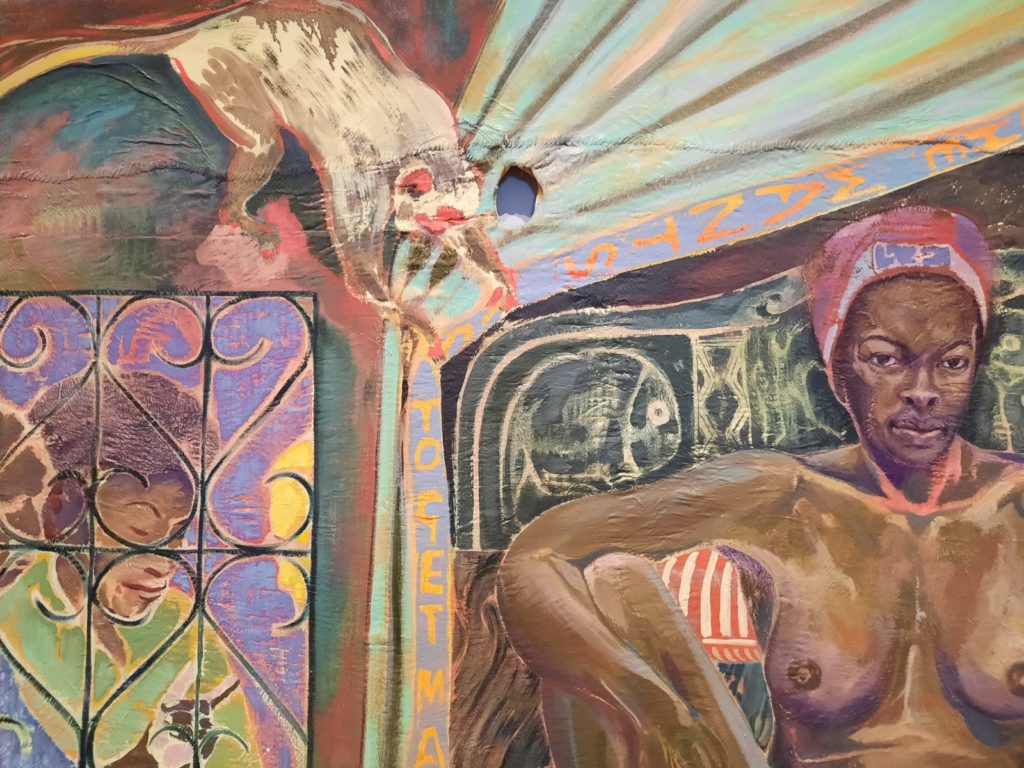
Salterton Arts Review’s Rating: 4/5
Michael Armitage on until 19 September 2021
Find out more about London galleries and exhibitions, sign up below:
If you see this after your page is loaded completely, leafletJS files are missing.

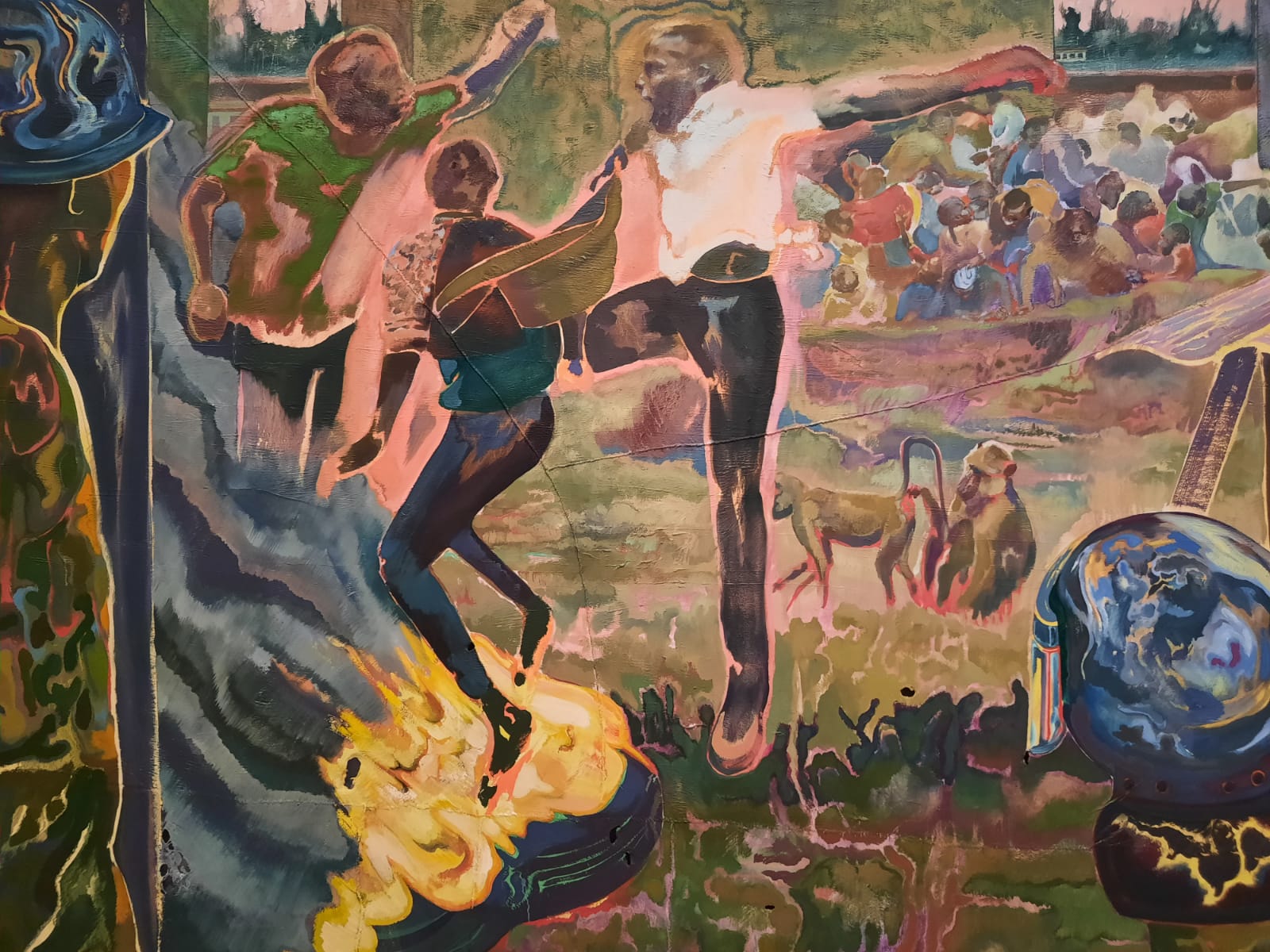
2 thoughts on “Michael Armitage – Royal Academy, London”